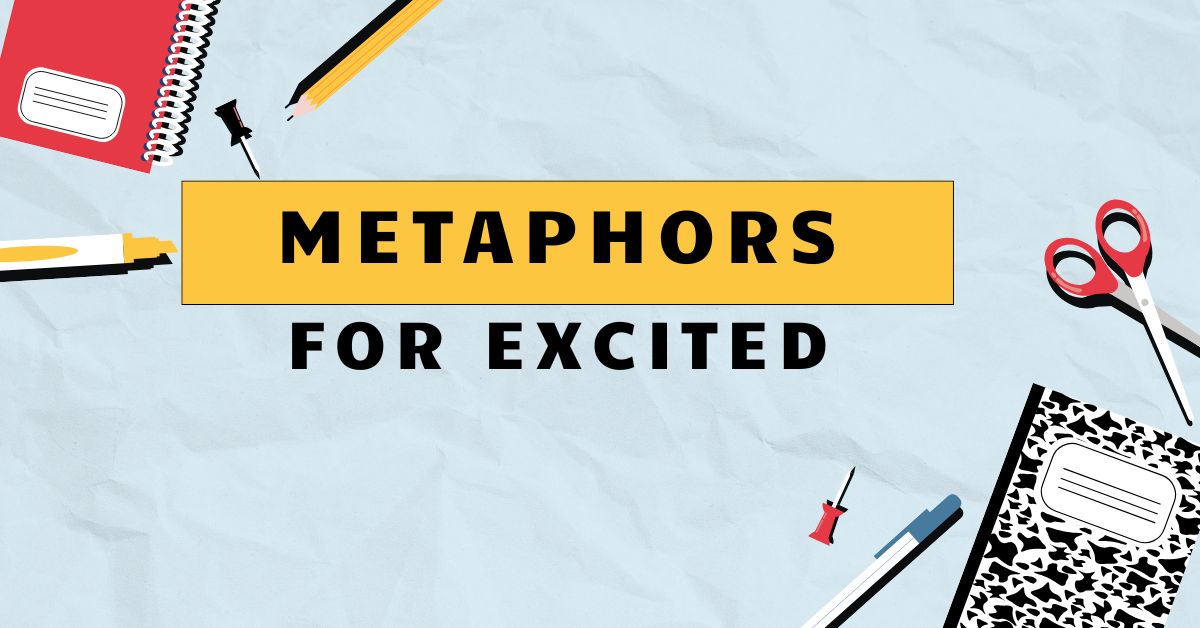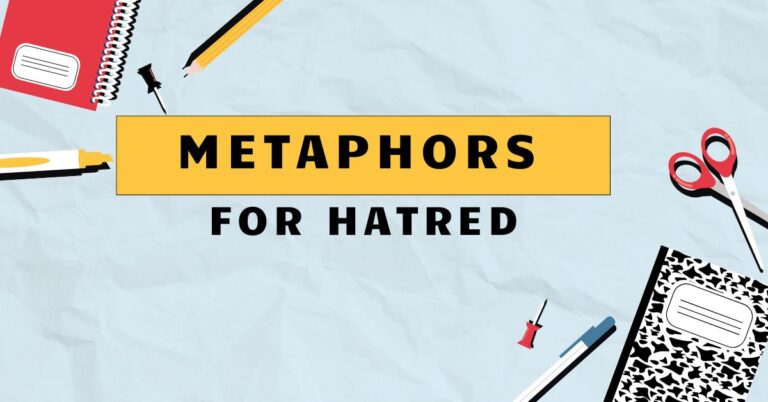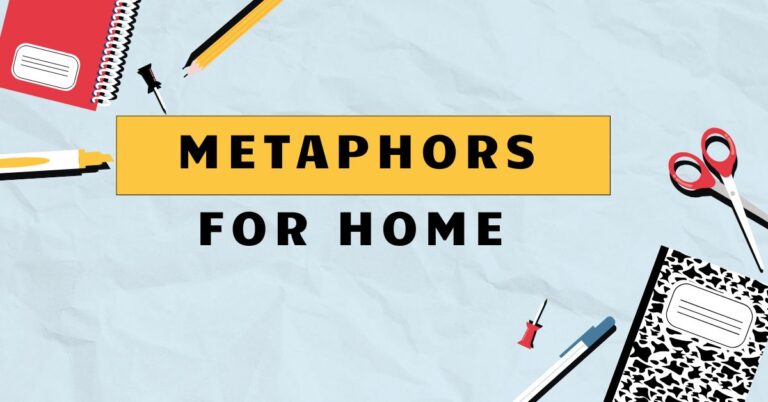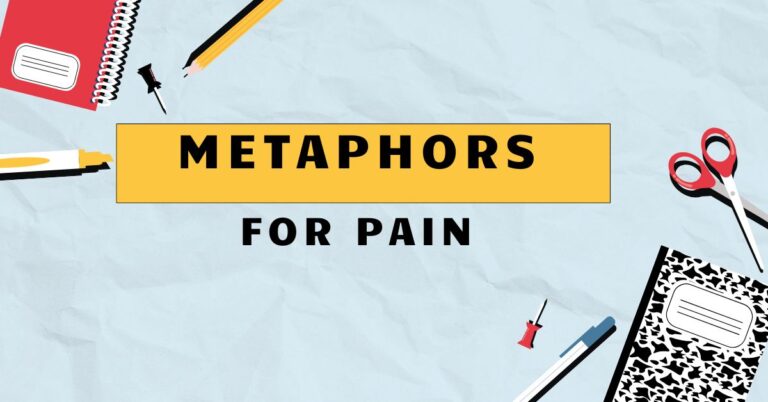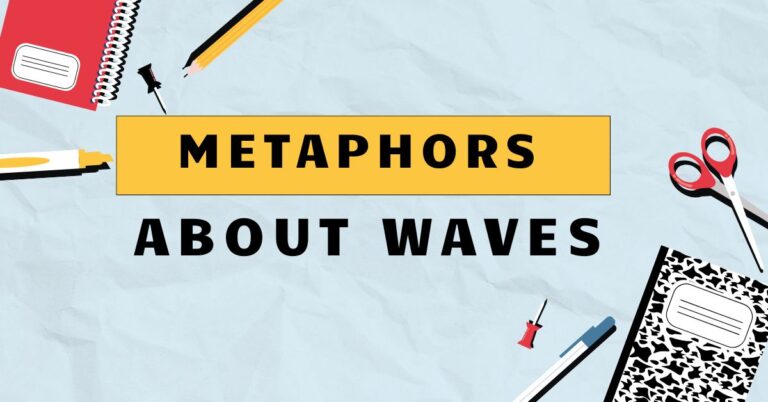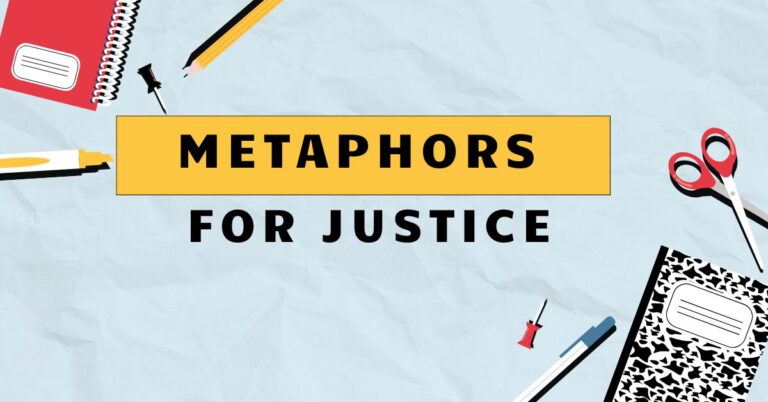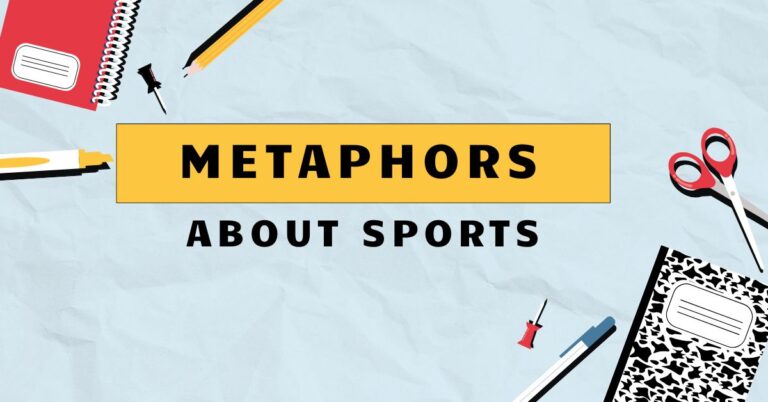29 Metaphors for Excited: Enhancing Your Expressive Language
Excitement is a powerful emotion, and describing it effectively requires more than just stating “I am excited.” Metaphors offer a vivid and engaging way to convey the intensity and nature of this feeling. Understanding and using metaphors for excitement can significantly enrich your writing and speaking, making your language more colorful and impactful.
This article explores a wide range of metaphors for excitement, providing definitions, examples, and practice exercises to help you master their use. Whether you are a student, writer, or language enthusiast, this guide will equip you with the tools to express excitement with creativity and precision.
Table of Contents
- Introduction
- Definition of Metaphor for Excited
- Structural Breakdown of Excitement Metaphors
- Types and Categories of Metaphors for Excited
- Examples of Metaphors for Excited
- Usage Rules for Metaphors of Excitement
- Common Mistakes When Using Excitement Metaphors
- Practice Exercises
- Advanced Topics in Metaphorical Language
- Frequently Asked Questions
- Conclusion
Definition of Metaphor for Excited
A metaphor for “excited” is a figure of speech that describes the feeling of excitement by comparing it to something else that shares similar characteristics. It doesn’t use “like” or “as,” which would make it a simile.
Instead, it directly equates excitement with another concept, creating a more vivid and impactful image. These metaphors often tap into physical sensations, motions, states of being, or abstract concepts to convey the intensity and nature of excitement.
The function of an excitement metaphor is to enhance communication by making it more engaging and relatable. Rather than simply stating that someone is excited, a metaphor can paint a picture of what that excitement feels like, making it easier for the audience to understand and empathize.
This is particularly useful in creative writing, public speaking, and everyday conversation, where adding color and depth to your language can significantly improve your impact.
Metaphors for excitement can be used in a variety of contexts, ranging from casual conversations to formal presentations. For instance, you might use a simple metaphor like “I was buzzing with excitement” in a conversation with a friend.
In a novel, you might use a more elaborate metaphor to describe a character’s anticipation, such as “Her heart was a hummingbird, fluttering wildly in her chest.” The choice of metaphor depends on the specific context, the desired effect, and the audience.
Structural Breakdown of Excitement Metaphors
The structure of an excitement metaphor typically involves two key elements: thetenorand thevehicle. The tenor is the subject being described (in this case, excitement), and the vehicle is the object or concept that is used to describe it.
The effectiveness of a metaphor depends on the connection between the tenor and the vehicle, and how well the shared characteristics are highlighted.
For example, in the metaphor “He was a coiled spring, ready to leap,” the tenor is the person’s excitement, and the vehicle is a coiled spring. The shared characteristic is the feeling of pent-up energy and anticipation.
The structure works by transferring the image of a tightly wound spring about to release its energy to the feeling of excitement, making it more palpable and understandable.
Another structural element to consider is theground, which refers to the shared characteristics or similarities between the tenor and the vehicle. Identifying the ground is crucial for understanding why a particular metaphor works.
In the example above, the ground is the potential energy and readiness for action.
Metaphors can also be extended, meaning they can be developed over multiple sentences or even paragraphs. An extended metaphor allows for a more detailed exploration of the connection between the tenor and the vehicle, creating a richer and more nuanced image.
For example, instead of simply saying “She was a firework,” you could extend the metaphor by describing the various stages of a firework’s explosion to represent the different facets of her excitement.
Types and Categories of Metaphors for Excited
Metaphors for excitement can be categorized based on the type of imagery they evoke. Here are some common categories:
Physical Sensation Metaphors
These metaphors relate excitement to physical feelings or sensations. They often involve descriptions of bodily reactions, such as increased heart rate, butterflies in the stomach, or tingling sensations.
Motion-Related Metaphors
These metaphors use movement to describe excitement. They can involve images of running, jumping, flying, or other dynamic actions, suggesting the energetic and forward-moving nature of excitement.
Light and Brightness Metaphors
These metaphors associate excitement with light, brightness, and radiance. They often use images of sunshine, sparks, stars, or other luminous objects to convey the positive and illuminating qualities of excitement.
Animalistic Metaphors
These metaphors draw on animal characteristics and behaviors to describe excitement. They might involve images of energetic or playful animals, such as puppies, kittens, or birds, to capture the lively and unrestrained nature of excitement.
Explosive Metaphors
These metaphors compare excitement to something that explodes or bursts, highlighting the sudden and intense nature of the feeling. They can involve images of fireworks, volcanoes, or other explosive phenomena.
Abstract Metaphors
These metaphors use abstract concepts or ideas to describe excitement. They might involve comparisons to things like electricity, music, or dreams, focusing on the intangible and emotional aspects of excitement.
Examples of Metaphors for Excited
Here are some examples of metaphors for excitement, organized by category:
Physical Sensation Examples
The following table illustrates examples of physical sensation metaphors for excitement.
| Metaphor | Explanation |
|---|---|
| My heart was a drum solo. | The rapid, intense beating of the heart is compared to a drum solo, emphasizing the excitement. |
| Butterflies were having a rave in my stomach. | The fluttering sensation in the stomach is likened to a lively rave, highlighting the energetic excitement. |
| I felt a jolt of electricity run through me. | The sudden surge of energy is compared to an electric shock, emphasizing the intensity of the excitement. |
| My skin tingled with anticipation. | The physical sensation of tingling is used to describe the heightened state of excitement and anticipation. |
| I was buzzing with anticipation. | The feeling of being energized and restless is compared to a buzzing sound, highlighting the excitement. |
| My pulse was a hummingbird’s wings. | The rapid pulse is compared to the fast-beating wings of a hummingbird, showing the intensity of excitement. |
| A wave of heat washed over me. | The sudden rush of excitement is likened to a wave of heat, emphasizing its intensity. |
| My hands were clammy with anticipation. | The physical symptom of clammy hands is used to describe the nervous excitement. |
| I felt a shiver of excitement run down my spine. | The involuntary shiver is used to emphasize the thrilling aspect of the excitement. |
| My throat was tight with anticipation. | The physical sensation of a tight throat is used to describe the nervous excitement. |
| My breath caught in my chest. | The physical sensation of breathlessness emphasizes the intensity of the excitement. |
| My stomach did a flip. | The feeling of unease or nervousness is used to describe the exciting anticipation. |
| I felt lightheaded with excitement. | The sensation of lightheadedness emphasizes the overwhelming nature of the excitement. |
| My muscles were tense with anticipation. | The physical tension is used to describe the eagerness and excitement. |
| I felt a surge of adrenaline. | The physical rush of adrenaline is used to emphasize the intensity of the excitement. |
| My face flushed with excitement. | The physical reaction of a flushed face emphasizes the strong emotion of excitement. |
| My heart skipped a beat. | The irregular heartbeat is used to describe the surprising excitement. |
| I felt like I could jump out of my skin. | The feeling of restlessness and energy is used to describe the overwhelming excitement. |
| My senses were heightened with anticipation. | The increased awareness is used to emphasize the excitement. |
| I felt a knot in my stomach. | The feeling of unease or nervousness is used to describe the exciting anticipation. |
Motion-Related Examples
The following table illustrates examples of motion-related metaphors for excitement.
| Metaphor | Explanation |
|---|---|
| I was swept away by the news. | The feeling of being overwhelmed is compared to being swept away, highlighting the intensity of the excitement. |
| My mind was racing with possibilities. | The rapid flow of thoughts is compared to a race, emphasizing the excitement. |
| I was walking on air. | The feeling of lightness and joy is compared to walking on air, highlighting the happiness and excitement. |
| My hopes soared like a kite. | The uplifting feeling of hope is compared to a kite soaring, emphasizing the excitement. |
| I was propelled forward by my enthusiasm. | The driving force of enthusiasm is compared to being propelled, highlighting the excitement. |
| My spirits lifted like a balloon. | The uplifting feeling is compared to a rising balloon, showing the lightness and excitement. |
| I was carried away by the moment. | The feeling of being overwhelmed is compared to being carried away, emphasizing the intensity of the excitement. |
| My dreams took flight. | The realization of dreams is compared to taking flight, highlighting the excitement and freedom. |
| I was running on fumes of excitement. | The feeling of being sustained by excitement is compared to running on fumes, emphasizing the energy. |
| My thoughts were spinning. | The feeling of being overwhelmed with thoughts is compared to spinning, highlighting the excitement. |
| I jumped for joy. | The physical act of jumping is used to express the overwhelming excitement. |
| My heart leaped with joy. | The sudden feeling of happiness is compared to a leap, emphasizing the excitement. |
| I was floating on cloud nine. | The feeling of extreme happiness is compared to floating on cloud nine, highlighting the excitement. |
| My anticipation was building like a runaway train. | The increasing feeling of anticipation is compared to a runaway train, emphasizing the intensity. |
| I was swept up in the excitement. | The feeling of being overwhelmed is compared to being swept up, emphasizing the intensity of the excitement. |
| My enthusiasm was a tidal wave. | The overwhelming feeling of enthusiasm is compared to a tidal wave, emphasizing the intensity. |
| I was dancing with joy. | The physical act of dancing is used to express the overwhelming excitement. |
| My imagination took flight. | The feeling of creativity and excitement is compared to taking flight, highlighting the possibilities. |
| I was propelled by the force of my excitement. | The driving force of excitement is compared to being propelled, highlighting the energy. |
| My excitement was a rollercoaster. | The ups and downs of excitement are compared to a rollercoaster, emphasizing the thrilling experience. |
Light and Brightness Examples
The following table illustrates examples of light and brightness metaphors for excitement.
| Metaphor | Explanation |
|---|---|
| My eyes sparkled with anticipation. | The brightness in the eyes is compared to sparkling, highlighting the excitement. |
| I was glowing with happiness. | The radiant feeling of happiness is compared to glowing, emphasizing the excitement. |
| My face lit up with excitement. | The sudden brightening of the face is used to express the excitement. |
| I was beaming with joy. | The radiant expression of joy is compared to beaming, highlighting the excitement. |
| The news was a ray of sunshine. | The positive impact of the news is compared to sunshine, emphasizing the excitement and happiness. |
| My spirit was illuminated with hope. | The feeling of hope is compared to being illuminated, showing the brightness and excitement. |
| I was shining with anticipation. | The radiant feeling of anticipation is compared to shining, highlighting the excitement. |
| My enthusiasm was a bright flame. | The intense feeling of enthusiasm is compared to a flame, emphasizing the excitement and energy. |
| The possibilities glittered before me. | The attractive nature of the possibilities is compared to glitter, highlighting the excitement. |
| My heart was a beacon of hope. | The guiding feeling of hope is compared to a beacon, emphasizing the excitement. |
| I was dazzled by the opportunity. | The overwhelming feeling of excitement is compared to being dazzled, emphasizing the brilliance. |
| My imagination was ignited. | The spark of creativity is compared to being ignited, highlighting the excitement. |
| I was bathed in the light of excitement. | The all-encompassing feeling of excitement is compared to being bathed in light, emphasizing the joy. |
| My spirit was radiant with joy. | The glowing feeling of joy is compared to being radiant, highlighting the excitement. |
| I was lit up inside with happiness. | The internal feeling of happiness is compared to being lit up, emphasizing the excitement. |
| My future seemed bright. | The positive outlook is compared to brightness, emphasizing the excitement for what’s to come. |
| I was aglow with anticipation. | The radiant feeling of anticipation is compared to being aglow, highlighting the excitement. |
| My dreams were sparkling. | The attractive nature of the dreams is compared to sparkling, highlighting the excitement. |
| I was filled with the light of hope. | The positive feeling of hope is compared to light, emphasizing the excitement. |
| My excitement was a supernova. | The intense feeling of excitement is compared to a supernova, emphasizing the brilliance and energy. |
Animalistic Examples
The following table illustrates examples of animalistic metaphors for excitement.
| Metaphor | Explanation |
|---|---|
| I was as eager as a puppy. | The enthusiastic nature is compared to a puppy, highlighting the excitement. |
| My heart fluttered like a hummingbird. | The rapid beating of the heart is compared to a hummingbird, emphasizing the excitement. |
| I was as excited as a kid in a candy store. | The feeling of anticipation is compared to a kid in a candy store, highlighting the excitement. |
| I felt like a caged bird set free. | The feeling of liberation is compared to a bird being set free, emphasizing the excitement. |
| I was buzzing around like a bee. | The energetic activity is compared to a bee, highlighting the excitement. |
| My anticipation was a coiled snake, ready to strike. | The intense anticipation is compared to a coiled snake, showing the readiness for action. |
| I was as giddy as a schoolgirl. | The lighthearted feeling is compared to a schoolgirl, highlighting the excitement. |
| My excitement was a playful kitten. | The joyful feeling is compared to a playful kitten, emphasizing the fun aspect. |
| I felt like a racehorse at the starting gate. | The feeling of anticipation is compared to a racehorse, highlighting the readiness for action. |
| My spirits soared like an eagle. | The uplifting feeling is compared to an eagle soaring, emphasizing the excitement. |
| I was chirping with excitement. | The joyful expression is compared to chirping, highlighting the excitement. |
| My enthusiasm was a roaring lion. | The powerful feeling is compared to a roaring lion, emphasizing the intensity. |
| I felt like a fish out of water, but excited nonetheless. | The feeling of being out of place is juxtaposed with excitement, adding a unique twist. |
| My heart beat like a trapped bird. | The nervous excitement is compared to a trapped bird, emphasizing the intensity. |
| I was as happy as a clam. | The feeling of happiness is compared to a clam, highlighting the contentment and excitement. |
| My mind was racing like a cheetah. | The rapid thoughts are compared to a cheetah, emphasizing the speed and excitement. |
| I was as free as a bird. | The feeling of freedom is compared to a bird, highlighting the excitement. |
| My excitement was a playful dolphin. | The joyful feeling is compared to a playful dolphin, emphasizing the fun aspect. |
| I felt like a butterfly emerging from its cocoon. | The feeling of transformation is compared to a butterfly, emphasizing the excitement. |
| I was as energetic as a squirrel gathering nuts. | The active nature is compared to a squirrel, highlighting the busy excitement. |
Explosive Examples
The following table illustrates examples of explosive metaphors for excitement.
| Metaphor | Explanation |
|---|---|
| My excitement was a volcano about to erupt. | The intense feeling is compared to a volcano, highlighting the impending release of energy. |
| I felt like a firecracker ready to explode. | The building anticipation is compared to a firecracker, emphasizing the impending burst of excitement. |
| My joy burst like a supernova. | The sudden and intense feeling is compared to a supernova, highlighting the brilliance and excitement. |
| The news hit me like a bombshell. | The shocking impact is compared to a bombshell, emphasizing the overwhelming excitement. |
| My enthusiasm erupted like a geyser. | The sudden release of enthusiasm is compared to a geyser, highlighting the energy and excitement. |
| I was a powder keg of anticipation. | The intense anticipation is compared to a powder keg, emphasizing the potential for explosion. |
| My excitement detonated in my chest. | The sudden and intense feeling is compared to a detonation, highlighting the overwhelming joy. |
| The possibilities exploded in my mind. | The sudden realization of possibilities is compared to an explosion, emphasizing the excitement. |
| My hopes burst forth like fireworks. | The sudden and vibrant expression of hope is compared to fireworks, highlighting the excitement. |
| I was a pressure cooker of anticipation. | The building anticipation is compared to a pressure cooker, emphasizing the potential for release. |
| My excitement was a nuclear reaction. | The intense feeling is compared to a nuclear reaction, highlighting the immense energy. |
| I felt like a champagne bottle about to pop. | The building anticipation is compared to a champagne bottle, emphasizing the impending celebration. |
| My joy was an atomic blast. | The sudden and intense feeling is compared to an atomic blast, highlighting the overwhelming joy. |
| The opportunity sparked like dynamite. | The sudden and powerful opportunity is compared to dynamite, emphasizing the excitement. |
| My enthusiasm ignited like a rocket. | The sudden and powerful feeling is compared to a rocket, highlighting the energy and excitement. |
| I was a volcano of anticipation. | The intense anticipation is compared to a volcano, highlighting the impending release. |
| My excitement was a sonic boom. | The sudden and intense feeling is compared to a sonic boom, emphasizing the overwhelming impact. |
| The news exploded in my ears. | The shocking impact is compared to an explosion, emphasizing the overwhelming excitement. |
| My hopes erupted like a volcano. | The sudden and intense expression of hope is compared to a volcano, highlighting the excitement. |
| I was a bomb about to go off with excitement. | The intense feeling is compared to a bomb, emphasizing the impending release of energy. |
Abstract Examples
The following table illustrates examples of abstract metaphors for excitement.
| Metaphor | Explanation |
|---|---|
| My excitement was a symphony. | The harmonious and complex feeling is compared to a symphony, highlighting the richness of the emotion. |
| I felt like I was living in a dream. | The surreal and joyful feeling is compared to a dream, emphasizing the excitement. |
| My anticipation was a crescendo. | The increasing feeling is compared to a crescendo, highlighting the building excitement. |
| The opportunity was a golden ticket. | The valuable and rare opportunity is compared to a golden ticket, emphasizing the excitement. |
| My excitement was a whirlwind. | The chaotic and overwhelming feeling is compared to a whirlwind, highlighting the intensity. |
| I was riding a wave of anticipation. | The overwhelming feeling is compared to riding a wave, showing the intensity and excitement. |
| My joy was an endless song. | The continuous and happy feeling is compared to an endless song, highlighting the excitement. |
| The possibilities were a blank canvas. | The potential for creativity is compared to a blank canvas, emphasizing the excitement. |
| My enthusiasm was an electric current. | The energetic feeling is compared to an electric current, highlighting the intensity and excitement. |
| I felt like I was floating in a sea of possibilities. | The overwhelming feeling of potential is compared to a sea, emphasizing the excitement. |
| My heart was a melody of excitement. | The harmonious feeling is compared to a melody, highlighting the joy and excitement. |
| I was living in a fairytale. | The magical and joyful feeling is compared to a fairytale, emphasizing the excitement. |
| My anticipation was a slow dance. | The gradual and intimate feeling is compared to a slow dance, highlighting the excitement. |
| The opportunity was a gift from the gods. | The valuable and fortunate opportunity is compared to a gift, emphasizing the excitement. |
| My excitement was a vibrant painting. | The colorful and expressive feeling is compared to a painting, highlighting the richness of the emotion. |
| I was lost in a maze of possibilities. | The overwhelming feeling of potential is compared to a maze, emphasizing the excitement. |
| My joy was a never-ending story. | The continuous and happy feeling is compared to a story, highlighting the excitement. |
| The possibilities were a universe of stars. | The vast and endless potential is compared to a universe, emphasizing the excitement. |
| My enthusiasm was a magnetic force. | The attracting and powerful feeling is compared to a magnetic force, highlighting the intensity. |
| I felt like I was soaring on the wings of dreams. | The uplifting and joyful feeling is compared to soaring, emphasizing the excitement. |
Usage Rules for Metaphors of Excitement
Using metaphors effectively requires understanding and adhering to certain rules. First, ensure that the metaphor isappropriate for the context.
A highly dramatic metaphor might be out of place in a casual conversation, while a subtle metaphor might not be impactful enough in a passionate speech.
Second, the metaphor should beclear and understandable. Avoid using obscure or overly complex metaphors that might confuse your audience.
The connection between the tenor and the vehicle should be readily apparent.
Third,avoid mixed metaphors. A mixed metaphor occurs when you combine two or more inconsistent metaphors in the same sentence or passage.
For example, “He was burning the midnight oil to climb the ladder of success, but he was also sailing against the wind” is a mixed metaphor because it combines the images of burning oil, climbing a ladder, and sailing against the wind in a way that doesn’t make sense.
Fourth, be mindful ofoverused metaphors. While some metaphors are common and effective, using them too frequently can make your language sound cliché and unoriginal.
Try to find fresh and creative ways to express excitement.
Finally,consider your audience. The effectiveness of a metaphor can depend on the audience’s cultural background, knowledge, and experiences.
Choose metaphors that are likely to resonate with your audience and that they will understand.
Common Mistakes When Using Excitement Metaphors
One common mistake is usingclichéd metaphors. While phrases like “on cloud nine” are easily understood, they lack originality and impact.
Strive for fresh, imaginative comparisons.
Another frequent error is creating inconsistent or mixed metaphors. For instance, saying “He was a volcano of enthusiasm, but he kept his cards close to his chest” combines clashing images that weaken the overall effect.
Failing to consider the audience’s understanding can also lead to miscommunication. A metaphor that relies on specialized knowledge or cultural references might not resonate with everyone.
Here’s a table illustrating common mistakes and their corrections:
| Incorrect | Correct | Explanation |
|---|---|---|
| I was on cloud nine and also climbing the walls with excitement. | I was on cloud nine with excitement. | Avoid mixing clichés with other metaphors. |
| My excitement was a tidal wave of butterflies. | My excitement was a tidal wave. OR Butterflies were having a rave in my stomach. | Ensure the metaphor is consistent and makes sense. |
| He was a rocket ship, but he was also stuck in the mud. | He was a rocket ship, ready for launch. | Avoid contradictory images within the same metaphor. |
| The news hit me like a ton of bricks, and I was walking on air. | The news hit me like a ton of bricks. (If the news was overwhelming) OR I was walking on air. (If the news was elating). | Ensure the metaphor aligns with the intended emotion. |
Practice Exercises
Test your understanding of metaphors for excitement with these exercises:
Exercise 1: Identify the Metaphor
Identify the metaphor used to describe excitement in each sentence.
| Question | Answer |
|---|---|
| 1. Her heart was a hummingbird, fluttering wildly in her chest. | a hummingbird, fluttering wildly |
| 2. He was a coiled spring, ready to leap with anticipation. | a coiled spring |
| 3. My mind was racing with possibilities after hearing the news. | racing with possibilities |
| 4. The opportunity was a golden ticket to a new adventure. | a golden ticket |
| 5. She was glowing with happiness as she shared the exciting news. | glowing with happiness |
| 6. He was swept away by the sheer joy of the moment. | swept away |
| 7. My excitement was a volcano about to erupt. | a volcano about to erupt |
| 8. Her enthusiasm was a bright flame, illuminating the room. | a bright flame |
| 9. He felt like he was floating on cloud nine after the victory. | floating on cloud nine |
| 10. My imagination was ignited with possibilities. | ignited with possibilities |
Exercise 2: Complete the Metaphor
Complete the following sentences with an appropriate metaphor for excitement.
| Question | Answer |
|---|---|
| 1. My heart was beating like a __________. | drum |
| 2. She was as excited as a __________ in a candy store. | kid |
| 3. The news hit him like a __________. | bombshell |
| 4. His enthusiasm was a __________, ready to take flight. | rocket |
| 5. She felt like she was __________ on a wave of joy. | surfing |
| 6. My imagination was a __________, full of vibrant colors. | painting |
| 7. His excitement was a __________, filling the room with energy. | whirlwind |
| 8. She was as giddy as a __________, ready to celebrate. | schoolgirl |
| 9. The possibilities were a __________, waiting to be explored. | universe |
| 10. My anticipation was a __________, building towards the big event. | crescendo |
Exercise 3: Create Your Own Metaphor
Write a sentence using a unique metaphor to describe excitement in the following scenarios:
- Winning a lottery
- Getting engaged
- Graduating from college
- Seeing your favorite band perform
- Landing your dream job
Possible Answers:
- Winning a lottery: My joy was a supernova, illuminating my life with unexpected fortune.
- Getting engaged: Our love story was a symphony, reaching its crescendo with the promise of forever.
- Graduating from college: Graduation was a launchpad, propelling me towards a future brimming with possibilities.
- Seeing your favorite band perform: The
concert was an electric storm, each note a jolt of pure energy.
- Landing your dream job: Landing my dream job was like finding a golden key, unlocking doors to a world of opportunity.
Advanced Topics in Metaphorical Language
Delving deeper into metaphorical language involves understanding nuances and subtleties that can elevate your writing and speaking. One advanced topic is the use ofsustained metaphors, where a single metaphor is developed throughout an entire piece of writing.
This can create a powerful and cohesive effect, but it requires careful planning and execution.
Another advanced concept is the use of mixed metaphors for deliberate effect. While generally discouraged, intentionally mixing metaphors can create a sense of disorientation or absurdity, which can be useful in certain contexts, such as satire or experimental literature.
Furthermore, exploring the cultural and historical context of metaphors can reveal deeper layers of meaning. Metaphors often draw on shared cultural experiences and beliefs, and understanding these references can enhance your appreciation and use of metaphorical language.
Finally, studying the works of masterful metaphor users, such as poets, novelists, and public speakers, can provide valuable insights into the art of crafting effective metaphors. Pay attention to how they use metaphors to create vivid images, evoke emotions, and convey complex ideas.
Frequently Asked Questions
Conclusion
Mastering the use of metaphors for excitement can significantly enhance your ability to communicate effectively and creatively. By understanding the different types of metaphors, adhering to usage rules, and avoiding common mistakes, you can craft vivid and impactful language that resonates with your audience.
Practice the exercises provided in this article, and continue to explore the works of masterful metaphor users to further develop your skills. With dedication and practice, you can unlock the power of metaphorical language and express excitement with eloquence and flair.

